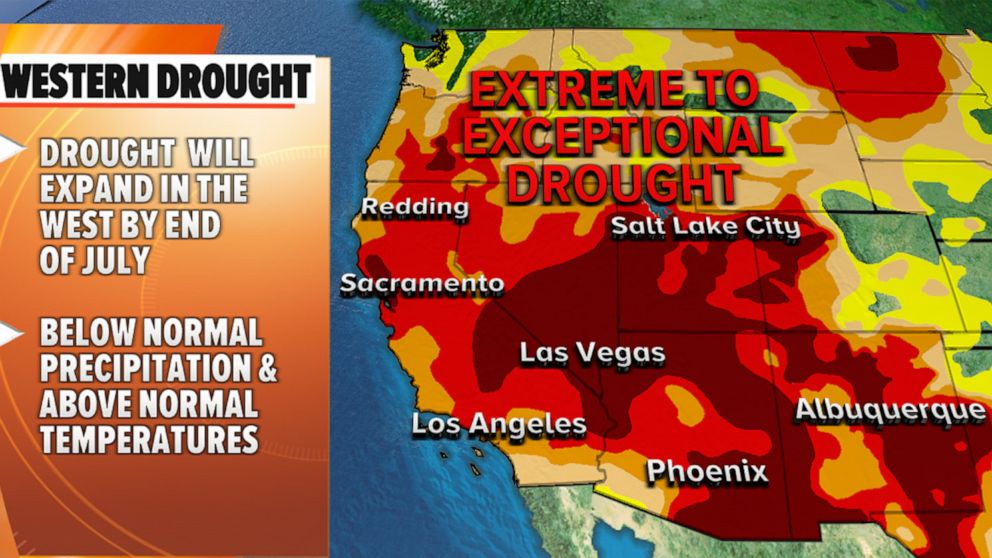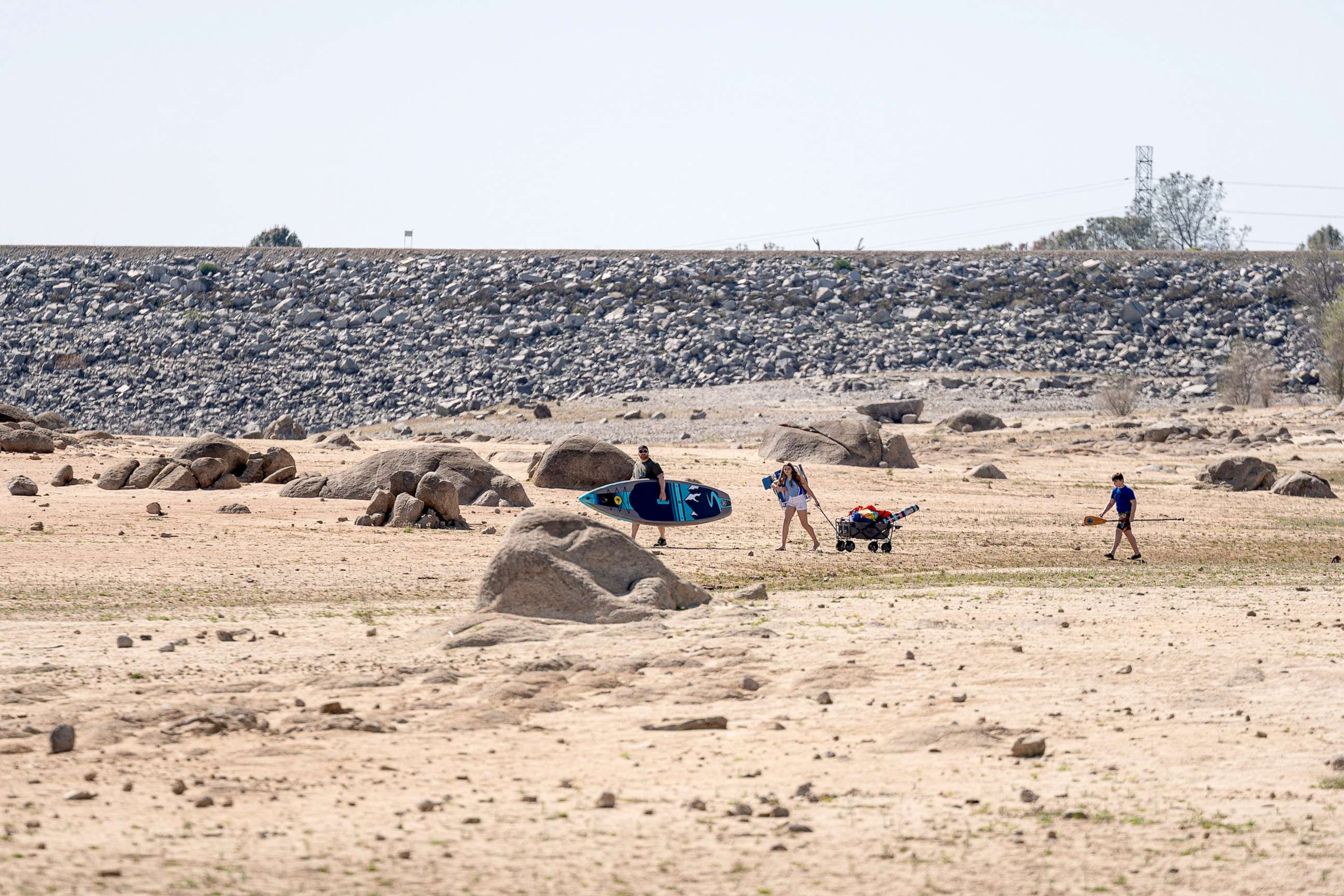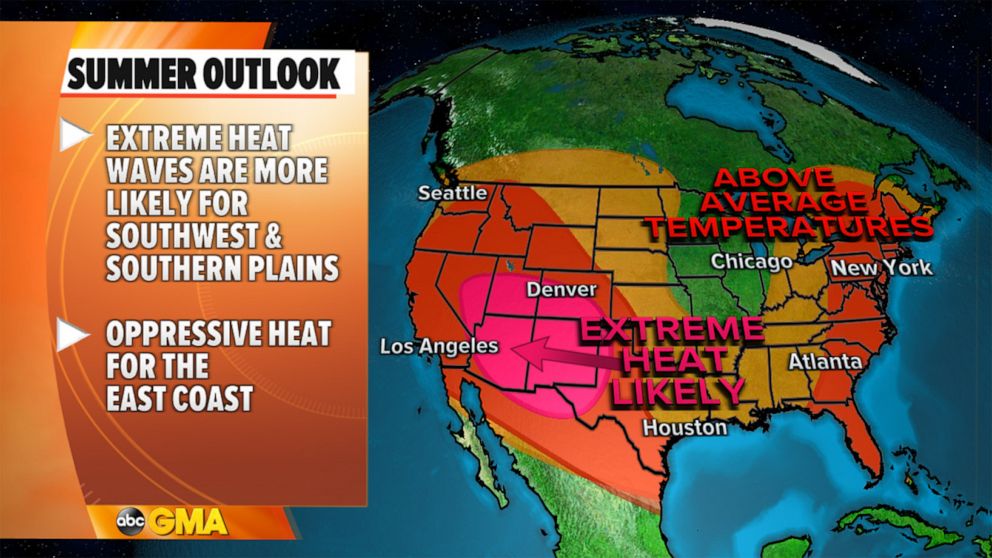Summer forecast calls for intensifying drought across American West
Greenhouse gases and aerosols emitted by human activity make droughts worse.
The western United States is in the midst of an intensifying drought. In the latest U.S. Drought Monitor released Thursday, nearly 52% of the western U.S. is in "extreme" or "exceptional drought."
In parts of California and Nevada, two dry winters in a row, and a very weak monsoon in 2020 have combined to create massive precipitation deficits. Parts of this region are likely seeing the worst second sequential year of drought in over 30 years.

Since the start of the water year, which began Oct. 1, 2020, major American cities in the West have seen well below average precipitation. Downtown San Francisco is over a foot below their water year average. Redding, California, is over 17 inches below their water year average. Phoenix, Las Vegas and Salt Lake City all are few inches below their water year average.
"California's drought has recently gone from bad to worse," UCLA climate scientist Daniel Swain told ABC News. "This striking increase in drought severity has been driven by several factors, including extremely low rainfall, warmer than typical historical temperatures and unusually rapid snowmelt in mountain areas. Warming temperatures, a declining snowpack and a narrowing rainy season are all hallmarks of climate change in the region."
The latest drought monitor report also states: "Above-normal temperatures over much of the West over the past 60 days has resulted in rapid snowmelt and, due to dry topsoil, much of the melt water has not made it into the rivers, lakes, and reservoirs. In California, the water level in Lake Tahoe is 2.5 feet lower than this time last year."
In a tweet Wednesday, the National Snow and Ice Data Center stated: "Snow cover now is the lowest in the 21-year satellite record."
"I think folks have been taken somewhat off guard by the rapid intensification of the California drought in recent months -- soil and vegetation conditions in some regions have reached their driest levels on record for the time of year, and reservoir levels are now lower than they were on at the same calendar date at any point during California's 2012-2016 drought," Swain said.
Brad Pugh, a meteorologist with NOAA's Climate Prediction Center said: "The upcoming monsoon season may provide some relief, but drought is likely to persist due to its long-term duration."

"To mitigate the effects of the drought, residents can conserve water and remain aware of the current drought conditions from the U.S. Drought Monitor," Pugh continued.
There is a direct link between climate change and drought. In a new study published in Nature Communications, researchers at the University of California, Irvine, claim that greenhouse gas emissions and aerosol pollution are directly tied to increases in the frequency and severity of droughts.
"There has always been natural variability in drought events around the world, but our research shows the clear human influence on drying, specifically from anthropogenic aerosols, carbon dioxide and other greenhouse gases," the study's lead author Felicia Chian said in a press release earlier this week.
The study's co-author, Omid Mazdiyasni, added: "To make matters worse, droughts can be accompanied by heat waves, and high heat and low moisture can increase wildfire risk, which is already significant in the western United States."
Unfortunately, there is no relief in sight. The summer months offer very little chances of rain in the western U.S.

The latest Climate Prediction Center forecast also shows much of the U.S. will see above-average temperatures through August. Parts of the Southwest U.S., where the drought will persist, will see the highest chances of extreme temperatures during the summer months.
Parts of the eastern U.S. will also see above-average temperatures, with temperatures well above average expected from Florida to Maine.
Ginger Zee contributed to this report.




